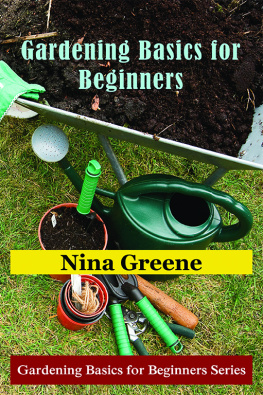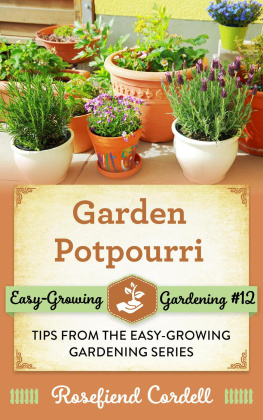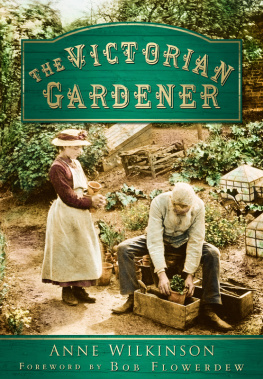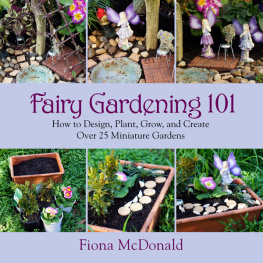Gardening for a Lifetime

Gardening
for a
Lifetime
How to Garden Wiser
As You Grow Older
By Sydney Eddison
Illustrations by
Kimberly Day Proctor

Copyright 2010 by Sydney Eddison. All rights reserved.
Published in 2010 by Timber Press, Inc.
The Haseltine Building
133 S.W. Second Avenue, Suite 450
Portland, Oregon 97204-3527
www.timberpress.com
2 The Quadrant
135 Salusbury Road
London NW6 6RJ
www.timberpress.co.uk
Printed in the United States of America
Library of Congress Cataloging-in-Publication Data
Eddison, Sydney, 1932
Gardening for a lifetime : how to garden wiser as you grow older / by Sydney Eddison.
p. cm.
Includes index.
ISBN 978-1-60469-065-1
1. Gardening for older people. 2. Low maintenance gardening. I. Title.
SB457.4.A34E33 2010
635dc22
2009046594
A catalog record for this book is also available from the British Library.
In memory of my husband,
John Martin Ryalls Eddison

Contents

Acknowledgments
W RITERS ARE ADVISED to write about what they know. Ive taken that advice to heart and written, yet again, about my own garden. As the garden is central to my life and happiness and to the book, its ongoing maintenance is critical. But without Erica Carroll, it might not have been possible. I have been physically unable to garden for the last five months.
Nevertheless, this remarkable young woman, who comes for only six hours a week, has managed the entire garden all season, with less-than-regular help from a college student. She found her own pace, set priorities, and never let one area take up time at the expense of another. For what she has done, I admire and cherish her and am deeply in her debt.
Almost as vital to the garden and the book has been the help of Terence Farrell and his young family. In the grip of the gardening passion, Terence is busy making his own garden, which will one day be admired and visited by many. But he has also volunteered in mine for the last two seasons, more than once bringing a friend from work, Georgia Shafer-Suriani. Terence has also been pressed into service for his computer skills, and his long-suffering wife, Rosa, and seven-year-old twins have put up with it all. My gratitude to the Farrells is boundless.
A Master Gardener with his own gardening business, Larry Birch volunteered to deliver three yards of topsoil and twelve yards of mulch, and to shovel it off his truck. He also transported topsoil to the woodland garden, where he weeded and planted primroses. What kindness!
To help me deadhead the daylilies this season, friends have shown up every night, unbidden: Marilyn Rennagel, Lorie Barber, and Jane Hellman. For this kind service, my undying affection and so many thanks.
Having Anne Harrigan appear, more or less out of the blue, was an incredible stroke of luck. Anne, too, came as a volunteer and stayed on as my assistant and problem solver. I couldnt cope without her. For a few hours a week, she is a helpful bright spot in my life.
Martin and I had been devoted to Kim Proctor and her husband, David, for twenty years. We enjoyed watching their children grow up; Kim brought her mother to see my garden; and I know Kims sister and a brother. So I feel that I know her whole family. I have always admired Kims horticultural knowledge and loved her drawings, which appeared in the Oliver Nurseries catalog for years. She was the perfect partner on a book that is so close to my heart. Her sensitivity and compassion have made her a joy to work with, and her drawings say eloquently what I may have failed to express adequately in words.
I am also exceedingly fortunate to have Jane Dystel as my agent. She cares about her clients, treats their work with respect, and goes to great pains to see that it is presented in the best possible form. I appreciate the work that she and the staff of Dystel & Goderich Literary Management put into a proposal. Thanks for everything.
To Tom Fischer and Timber Press, more thanks for taking on this book. Im lucky to have you.
And last but certainly not least, Gregory Piotrowski prepared the plant index and spared me embarrassment by a preliminary reading of the manuscript with an eye to the accuracy of botanical nomenclature. A 1986 graduate of the New York Botanical Garden School of Professional Horticulture, Greg stayed on as a gardener, and we met shortly thereafter. I have presumed upon this old and valued friendship before, so thanks yet again, Greg.

Preface
G ARDENS AND GARDENERS age and change. Why wouldnt they? The passage of time brings about changes in all living things, yet old age always takes us by surprise. Im stunned by it. In the sliding glass doors to the kitchen, I catch glimpses of an old woman hobbling around my garden, and I realize in amazement that its me. When I began writing this book, I wasnt hobbling. That has happened during the last few months.
The old order changeth, yielding place to new, / And God fulfils himself in many ways, lest one good custom should corrupt the world. When I was young and read Alfred Lord Tennysons Idylls of the King, I rebelled against the idea that any good thing could possibly corrupt the world. How could it? And how could Arthur, that model of goodness, corrupt anything? But in a garden, it becomes quite clear. Change is natures way of managing it allanimal, vegetable, and even mineral. The sands of the desert shift and mountains erode. Everything changes, and somehow or other it all works.
Its hard to say whether a garden is a metaphor for life or the other way around. Certainly, each phase of my life has been clearly reflected not only in the glass doors but also through them. The view today is very different from the same view in 1961. At that time, the kitchen was just a covered porch surrounded by long grass and brush. The glass doors were not put in until 1980, when there was finally something to see.
The garden emerged by fits and starts over a period of many years. But it doesnt seem so long ago that it was in its infancy and I was young. Now we are both old. The first rhododendrons I planted have trunks like trees, and a Chinese chestnut given to me as a sprout in a four-inch pot has reached a height of thirty-five feet.
Evidence of change is everywhere, in both garden and gardener. Weve been through a lot together: the year the trees were defoliated by inch worms that hung in masses from their bare branches; drought years, when my husband and I pumped gray water from the bathtub to revive the wilting shrubs; a three-year plague of voles that decimated the shade plantings.
To balance these relatively minor setbacks, there have been so many moments of heart-stopping wonder and delight, such as the triumph of a yellow ladys slippers first bloom. I now have a whole clump, and they remind me of my youth and the farmer who taught me about wildflowers. He used to send away for plants and seed and managed to establish a small colony of yellow ladys slippers in the woods behind his farm.
Next page











